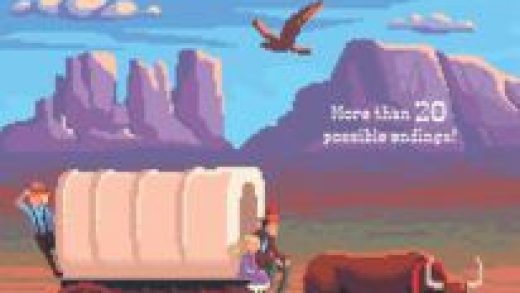For a lot of people, a love of reading begins in childhood. But how often do we revisit our childhood favorites in adulthood? These essays take a second look at popular children’s literature from the eye of an adult: sometimes the result is positive, sometimes it’s uncertain, but it’s always clear that the books we read as children are powerful forces in shaping our personalities, interests, and understanding of ourselves.
“Frog and Toad Are Queer Relationship Goals” by S.E. Fleenor
Fleenor’s essay explains the love and understanding that is inherent in Frog and Toad’s relationship, and shows how queer people can apply these lessons in empathy to their own relationships.
Queer folks, and kids in particular, don’t often get to see this kind of simple, ordinary, yet extraordinary love between two characters who are men.
“How a Book Trilogy About Killing God Helped Restore My Faith” by Isabel Cole
Although His Dark Materials by Phillip Pullman is well-known for its anti-religion stance, Cole reinterprets the books in a nuanced way. These books celebrate love and courage and the kind of divinity that comes from searching for the truth. Cole explains how Pullman’s trilogy gave her a powerful new understanding of faith by celebrating these ideals—and by killing God.
In crafting a universe both godless and divine, Pullman freed me to see my own in exactly those terms.
“Anne Shirley Was the Best Friend a Queer Brown Boy Could Have” by C.E. Gatchalian
Anne Shirley’s independence and strong will have made her a beloved character, but Gatchalian explores the ways that Anne’s outsider status inspired him as young, queer, Filipinx boy. In both the book and the 1985 TV adaptation, Gatchalaian uses Anne to understand his sexuality and identity.
I needed something to empower me, something to help me survive; and Anne Shirley came along at just the right time.
“These Middle-Grade Novels Are Some of the Most Formally Innovative Works of Our Time” by Elyse Martin
A Series of Unfortunate Events by Lemony Snicket are more than just words on paper; Martin argues for the importance of Snicket’s postmodern use of the book as a physical object in segments where entire pages are printed black, or illustrations interact with the text. This essay explores the ways in which Snicket’s work goes beyond the written word, and inhabits the world of the reader.
The books play around with the knowledge that they are books, in a sort of Barthesian jouissance, exploring and exploding literary codes. They are writerly texts.
“The Not-So-Hidden Racism of Nancy Drew” by Andrea Ruggirello
Nancy Drew is an American cultural touchstone, but that doesn’t mean she’s above criticism. In this essay, Ruggirello explores how Nancy Drew’s racism has been edited out of the books, and asks whether making something whiter really makes it less racist.
The ugliness of America’s racism is something that cannot be swept under the rug, yet without the proper context and guidance, particularly for children, the revival of these stories continues a cycle of pain and re-traumatization.
“I Saw Myself in Meg Murry Even Before She Looked Like Me” by Tajja Isen
Seeing yourself in literature is powerful, but what exactly does it mean to be represented? And how much work should readers have to do to connect with a book? Isen writes about loving A Wrinkle in Time both as a young child reading a white main character, and after the film presented a biracial Meg Murry.
All of a sudden, I was offered more than just a hero with whom I shared intellectual precocity and emotional intensity — I had one who shared my hair.
“The Children’s Book That Made Me Realize It’s Okay to Be Alone” by Niko Maragos
Rediscovering a favorite picture book as an adult leads Maragos to compare the lesson he took from the book as a child and the lesson the book is actually teaching. While he once understood the book to be about love, in adulthood he sees a more complicated meaning: one that exalts wonder above all else.
The lesson of Miss Rumphius that I’ve encountered all these years later is that our capacity for wonder is not a cavity that can only be filled, or even best be filled, with love.
“‘The Little Prince’ Helped Me Let My Childhood Die” by Melanie Bui Larsen
Larsen moves through time from her childhood to adolescence to budding adulthood and shares how her understanding of The Little Prince has shifted over time. This essay shows the ways in which magic follows us throughout our lives and stays with us even when we think it’s gone.
Some part of me was convinced that innocence, possibility, and awe were tied to a physical place — a place as far-flung as the most distant planet.
Before you go: Electric Literature is campaigning to reach 1,000 members by 2020, and you can help us meet that goal. Having 1,000 members would allow Electric Literature to always pay writers on time (without worrying about overdrafting our bank accounts), improve benefits for staff members, pay off credit card debt, and stop relying on Amazon affiliate links. Members also get store discounts and year-round submissions. If we are going to survive long-term, we need to think long-term. Please support the future of Electric Literature by joining as a member today!
The post Our Favorite Essays About Rethinking Children’s Books appeared first on Electric Literature.
Source : Our Favorite Essays About Rethinking Children’s Books













